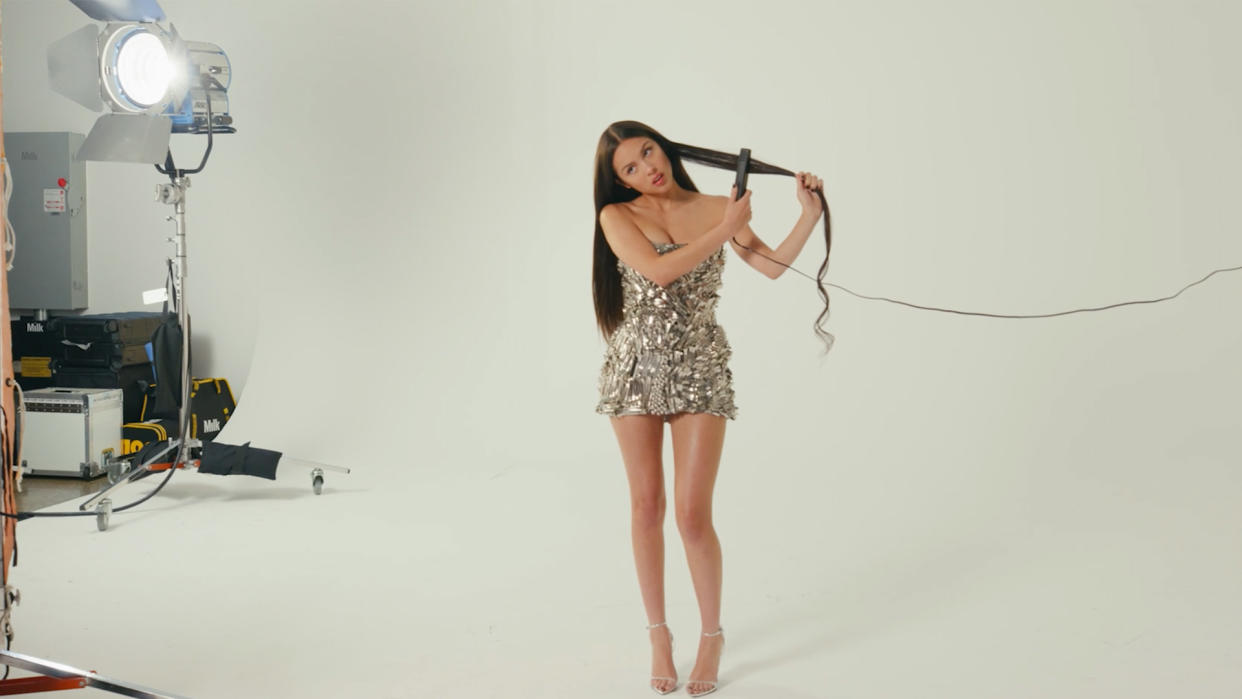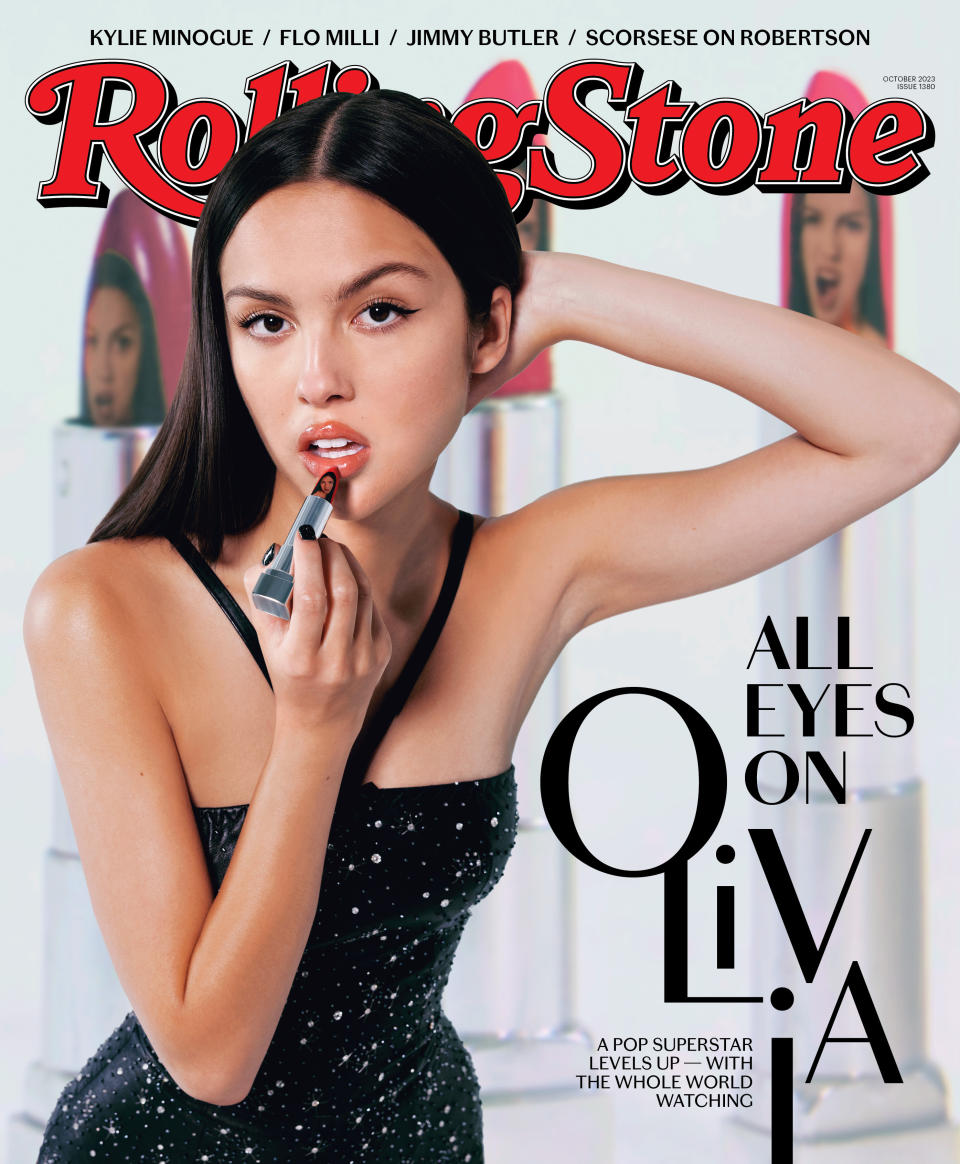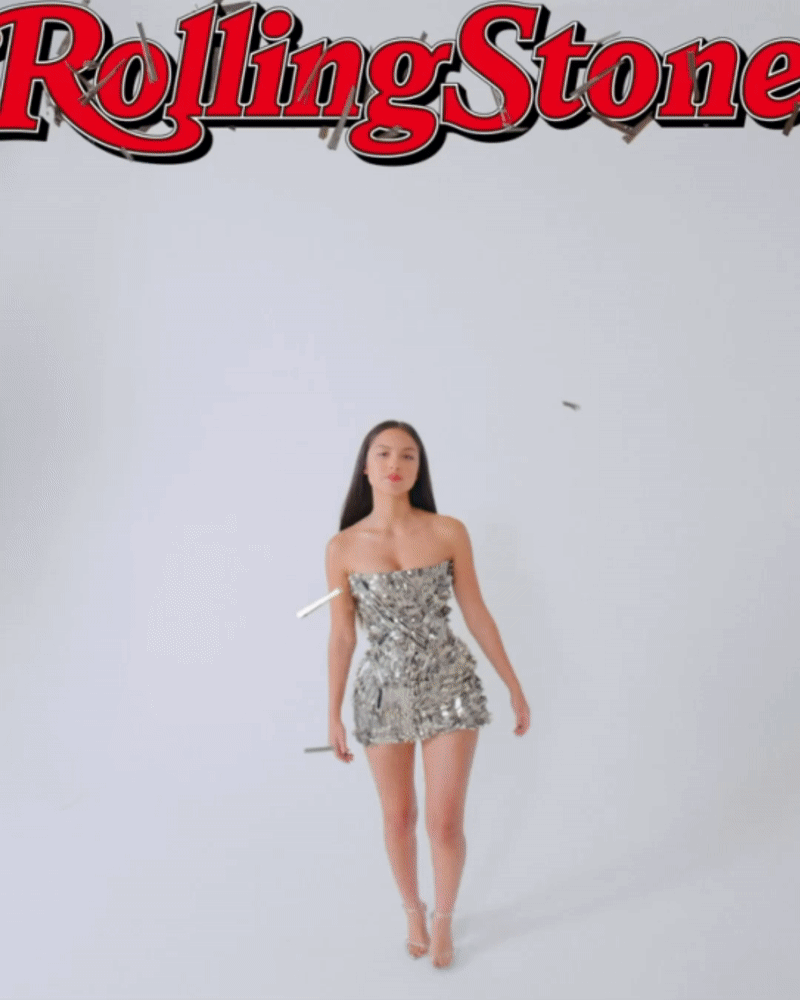How Olivia Rodrigo’s ‘Rolling Stone’ Cover Came Together

- Oops!Something went wrong.Please try again later.
- Oops!Something went wrong.Please try again later.
On her first solo Rolling Stone cover, Olivia Rodrigo appears deeply poised, leaning into a world that’s all her own. Wearing a classic black 1998 Versace bodysuit with beaded rhinestones, the young superstar shimmers as she leans forward and applies lipstick with a deadpan expression. A tiny version of Rodrigo is printed just below the rouge tip, and larger-than-life replicas of lipstick tubes, adorned with different images of the singer, tower behind Rodrigo. We’ve entered a world full of Olivias — and it feels like the best kind of déjà vu.
There’s no exact science to picking a Rolling Stone cover star, but having the 20-year-old superstar front the October issue was an “easy choice,” if you ask music editor Christian Hoard. In 2021, at age 18, Rodrigo was pictured alongside Alanis Morissette for our annual Musicians on Musicians issue, shortly after her debut album became a massive hit. Two years later, she stands alone as she goes deep on her sophomore album, Guts, and explores adulthood while still honoring her youthful heart.
More from Rolling Stone
“The goal was to create something that felt playful and humorous,” stylist Jared Ellner says. To help create that vibe, director of photography and deputy creative director Emma Reeves paired the “intuitive stylist” with conceptual artist and photographer John Yuyi, who has created experimental, graphic design projects for brands like Gucci in which she tattooed herself with logos and social media notification icons to create a viral campaign. Her eclectic design sensibility has created opportunities to work with other major brands including Marc Jacobs and Nike. When Reeves met the New York-based artist six months ago, she knew she would collaborate with Yuyi on a Rolling Stone project one day. “I just think she has the perfect sensibility for Olivia,” Reeves explains.
The meta, surrealist style of the Rodrigo images plastered on the cover and throughout the magazine story recalls Yuyi’s own project from 2019, where she pasted images of herself on to different shades of Gucci lipsticks. A lot of Yuyi’s inspiration comes from colorful magazines published a decade before the October cover star was even born. “My style is heavily influenced by Nineties and [early] 2000s Japanese pop-culture and fashion magazines,” Yuyi says, “I am super obsessed with that era,” she adds.
While the aesthetics of Japanese Elle and lifestyle magazine Shagaku informed Yuyi’s sketches and mood boards, the Taiwanese-born visual artist intended to illustrate a different emotional motif: the complex emotions Rodrigo writes about in her songs. “Girls just can’t help having this joy of validation, of making sure they’re pretty,” Yuyi explains. But as a woman who went viral in her twenties for a collection of swimsuits she made and photographed herself in, Yuyi recognizes the other side of the story, too: “No matter how pretty you are, you’re still a normal human with insecurities,” she adds.

Ahead of the photo shoot, both Yuyi and Ellner connected with Reeves for six weeks of planning. It was important to “facilitate this dialogue” and just “[let] them express themselves,” Reeves says. They exchanged excited texts, sharing ideas and Pinterest board links. Reeves knew both young creatives would compliment Rodrigo’s energy, but the pairing was “almost more perfect in the way that she’s now evolving,” she adds. Yuyi’s bold concepts set the groundwork for the cover, but Ellner helped bring those creative instincts to life with his fashion selections.
The L.A.-based stylist saw a silly, cheeky energy in the Japanese editorial work and Nineties Rolling Stone covers the trio shared as inspirations. Some of the pages would include “accessories made out of toys, or necklaces made out of Scrabble letters,” he says. Ellner played into this idea with statement pieces like Mark Gong’s comically large, 3D-printed metallic bow top (it was so big it had to be delivered to the onsite shoot in an oversize van) or Dilara Findikoglu’s dress made up entirely of metal duckbill hair clips — a hair-styling staple of the Nineties.
Of course, Rodrigo’s own signature style and journey informed the energy of her looks and the overall photo shoot. “Her references are really Nineties pop and Nineties rock,” Ellner explains. Specifically, stars from that era like Fiona Apple “who were able to shine through and look amazing with … [minimal] pieces.” Just like Rodrigo’s music, her fashion is also evolving. As a stylist for Gen Z phenomenon Emma Chamberlain (whom he styled for the cover of our Creators Issue in May), Ellner is known for seamlessly guiding celebrities into new territory through fashion. That’s where the vintage Versace bodysuit seen on the cover comes in. Originally worn by supermodel Naomi Campell on the runway in 1998, the timeless piece was the perfect one to emulate Rodrigo’s next phase. “It’s so fun to put someone new who’s iconic in something that was worn by someone who was iconic in the Nineties,” Ellner says, “That was pretty special.”
cnx.cmd.push(function() { cnx({ settings: { plugins: { pmcAtlasMG: { iabPlcmt: 1, } } }, playerId: "d762a038-c1a2-4e6c-969e-b2f1c9ec6f8a", mediaId: "f51761ac-f171-4382-8086-445cf59b86a1", }).render("connatix_contextual_player_f51761ac-f171-4382-8086-445cf59b86a1_2"); });
Best of Rolling Stone


